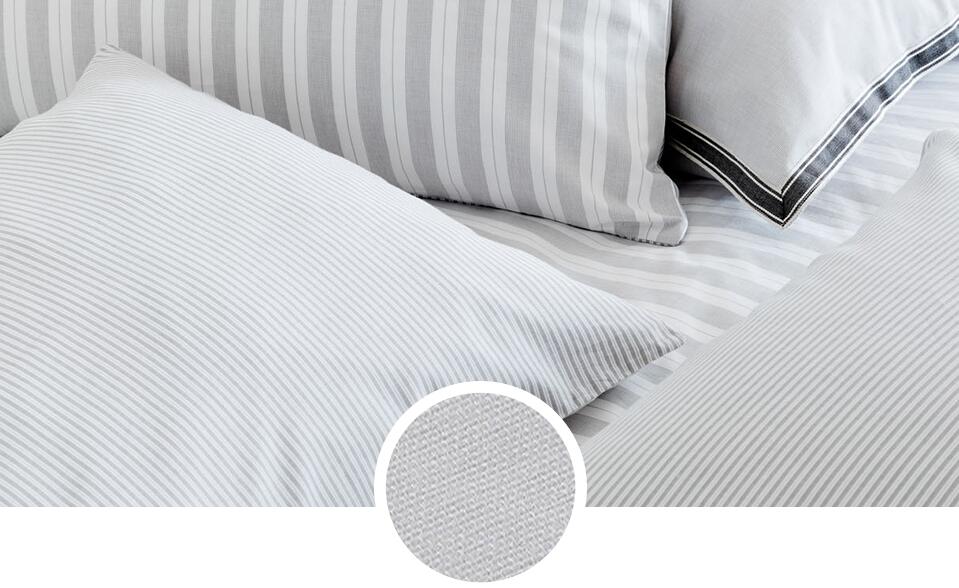 When you’re searching for bed linen, the thread count is a number you often see, but how does the number translate to the quality of what you’re buying and how it looks and feels?
When you’re searching for bed linen, the thread count is a number you often see, but how does the number translate to the quality of what you’re buying and how it looks and feels?
WHAT IS THREAD COUNT?
Thread count is a measure of the number of vertical and horizontal threads per square inch of specifically cotton fabric – thread count is not used to describe linen or flannel bed linen. The warp (lengthwise thread) and weft (crosswise thread) of the woven cotton are added together, so that a thread count of 200 equals 100 warp and 100 weft threads, in a single square inch of fabric. Simply put, it tells you how closely woven the cotton fabric is.
Find high thread count mattress protector
WHY IS THREAD COUNT IMPORTANT?
A quality bed linen with a high thread count will feel both fine and smooth. Quality, though, is key here: just because bed linen has a high thread count, doesn’t mean it will be a dream to sleep on. The quality of the fabric itself is paramount. You should be looking for designs made with the best cotton – such as Egyptian and Supima® – which have long fibres that produce soft and supple weaves. Pair this fabric with a high thread count, and you’ve found what good dreams are made of.
WHAT NUMBER SHOULD I LOOK FOR?
When it comes to the numbers, you’ll see counts up to around 800. With a count of 800 and excellent cotton, a bed linen will feel like a five-star hotel dressing, and will last for years and years. Don’t dismiss lower thread counts however, which can also produce comfortable and hard-wearing linens when good cotton is used. The rule of thumb is to look for a thread count of at least 200 (for a pleasing texture); but naturally, extra softness comes as the thread count increases.
WHICH WEAVE IS BEST FOR BED LINEN? DOES IT MAKE A DIFFERENCE? The weave is also important. Together with yarn and thread count, this will influence the overall look, feel and durability. Percale for example is a plain, tight weave with warp and weft threads crossing over and under one another one at a time. This creates a soft, matte finish. If you prefer a sheen and a slippery feel, sateen might be preferable. Jacquard woven designs, on the other hand, use raised threads to create textural detail, such as a stripe.
CARING FOR BED LINEN WITH ALL LEVELS OF THREAD COUNT Bear in mind the implications of your thread count on the care of your bed linen when you’re buying. High thread count sheets and duvet covers will look their best if you use a steam iron. A little extra work, but the results make the effort worthwhile (we promise). Low thread count linens with high-quality fibers will withstand heavy use and regular washing too; generally on a high to medium washing cycle and dried in the sun. And a final tip: whatever your linen, never, ever use fabric softener: it coats the fibres with an artificial solution that reduces absorbency rates and breathability – so stay clear if you want your bed linen to last.
Read more at: http://www.springtextile.com/blogs/what-is-thread-count.html
Follow us: @springhometex on Twitter | /Hunagshan Spring Hometextile on Facebook
